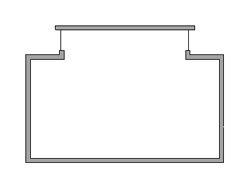 |
RECORD ARCHITECTURAL CONSTRAINTS |
ROOM GEOMETRY
The configuration of fenestrations has a significant impact on the distribution of daylight within a room. The different fenestration types are discussed below:
Single Side Lighting
Intent: Usual method of fenestration, introduces light on one side[1].
Quality: Light is brighter on the side with fenestrations. Other end of the room will appear darker.
Use: To achieve useful work surface illumination throughout the space, the ratio between the depth of the room and the height from the floor to the top of a full-room width window in single sidelit spaces should be limited to 1:2 or 2:5 if interior surface reflectances are high [2]. |
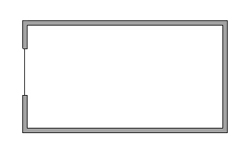 |
Bilateral Lighting
Intent: Windows placed on opposite sides introduce light from opposite ends. Also achieved by placing a clerestory at the opposite end.
Quality: Provides relatively even illumination.
Use: To achieve adequate lighting quantity in a space on opposite ends. |
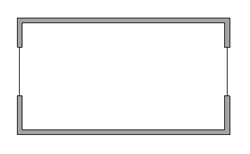 |
Skylight
Description: Introduces light from above through aperture in the roof [3].
Quality: For spaces with demanding visual requirements, brightness control of a skylight is necessary based on the shape of the room and location [4].
Use: To deliver daylight deep into interior areas of buildings [5]. Often used with diffusing or prismatic glazing [6]. |
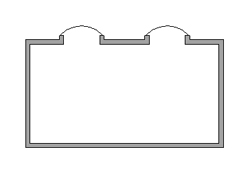 |
Clerestory
Description: Use of high windows above the ceiling line. Usually oriented to the north [7].
Quality: Perfomance could be more controlled than a skylight, as they can be oriented to prevent the penetration of direct sun [8].
Use: To deliver daylight deep into interior areas of buildings [9]. |
|
Roof Monitor or Double Clerestory
Description: The use of high windows on two opposite sides above the ceiling line. Usually oriented along the east and west axis [10].
Quality: Relatively even and balanced quality of light achieved compared to a single clerestory.
Use: To deliver daylight deep into interior areas of buildings. Used especially in churches. |
|
Sawtooth Clerestory
Description: Use of high windows and angled ceiling to produce more indirect reflected light. Usually oriented to the north [11].
Quality: Even lighting quality and deep penetration achieved when oriented to the north due to indirect reflection of light in the interiors
Use: To deliver daylight deep into interior areas of buildings. Used especially in factories and warehouses. |
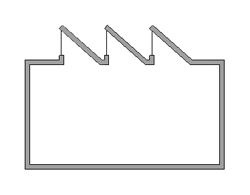 |
Light Shelf
Description: Provides both indirect light and shading, increasing the amount of daylight penetration [12].
Quality: Reduced brightness contrast between the interiors and the exteriors, and prevents the direct view of sun or sky.
Use: Increased daylight penetration |
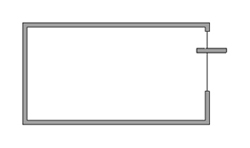 |
Awning Description: Extended shades used on the east and west facades of the building.
Quality: Reduced brightness contrast between the interiors and the exteriors.
Use: To provide shade to the building apertures. |
 |
Multilateral lighting
Intent: Light from multiple directions. Less use of artificial lighting during daylight hours.
Quality: Better brightness balance; Glare control still needed. Controls by zone
Use: Light from multiple directions. |
|
| |
|
|
References





